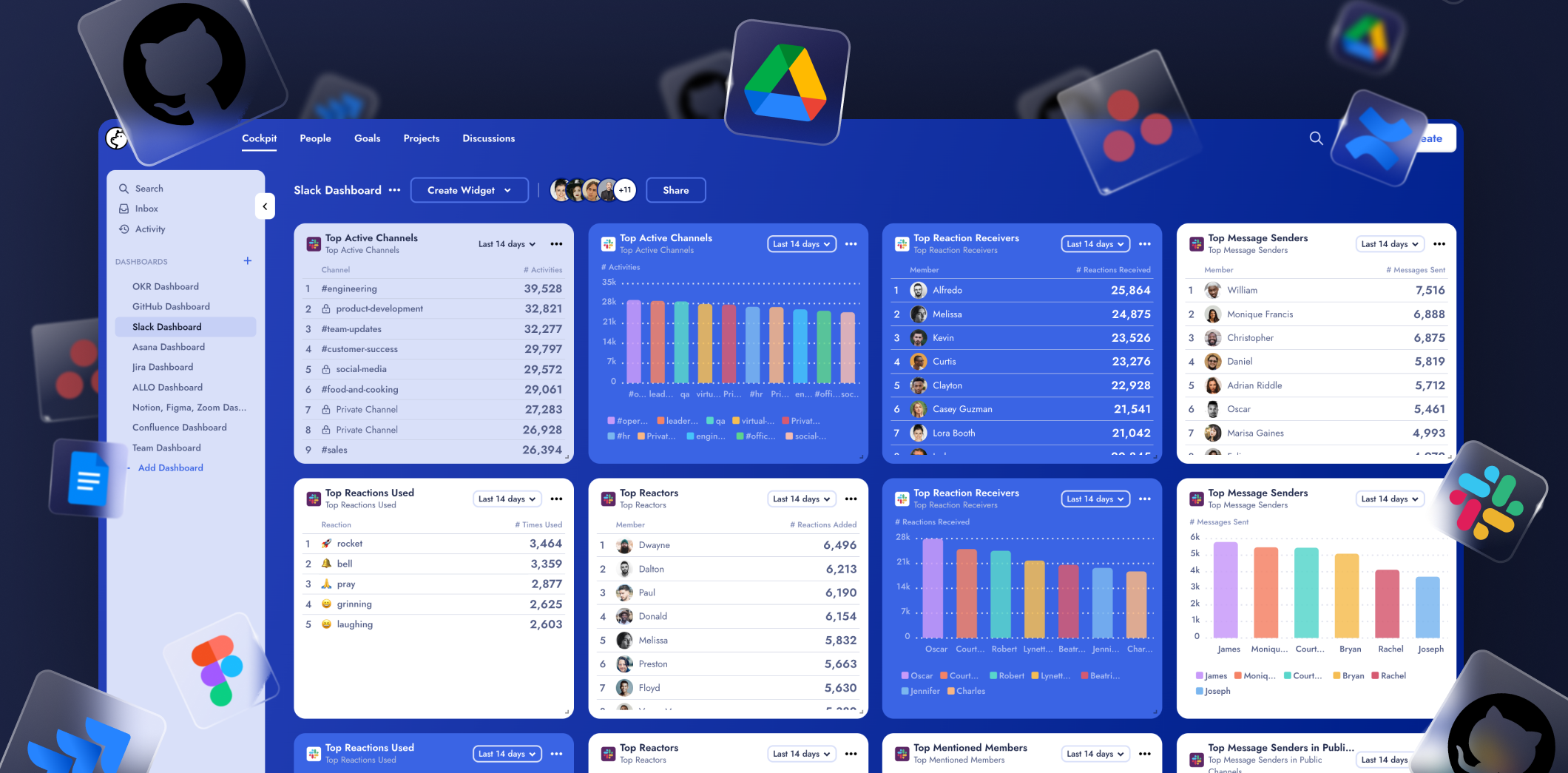Harnessing Slack: The Top 6 Metrics for Better Team Engagement and Collaboration
This post will detail 6 metrics we've found to be the most informative and useful for teams. These are accessible to everyone in your team in ALLO, promoting a collective understanding of communication dynamics.

Slack has become an essential part of the digital workspace, an integral hub for team communication and collaboration. To truly unlock its potential and foster a vibrant, engaged community, it's important to understand how your team is using Slack in the day-to-day.
Despite Slack Analytics offering access to a variety of metrics, using them can be complicated and sometimes not very insightful. That's exactly why we at ALLO stepped in, creating a more intuitive, user-friendly dashboard that provides comprehensive yet easily digestible metrics.
This post will detail 6 metrics we've found to be the most informative and useful for teams. These are accessible to everyone in your team in ALLO, promoting a collective understanding of communication dynamics.
Vital Metrics for Slack Usage
1. Public Message Ratio

What it is: This metric reflects the balance between public and private messages in your team's communication. It offers a glimpse into how transparent and open your team's communication is.
Why it's important: A higher percentage of public messages suggests open and inclusive communication, which encourages knowledge sharing across the team. This transparency is particularly crucial in remote working arrangements as it fosters trust and camaraderie within the team. Public channels allow conversations to be easily searchable, negating the need for outdated wikis or repeated questioning to seniors.
2. Top Message Senders

What it is: This metric identifies the individuals in your team who are most active in sending messages.
Why it's important: By knowing who sends the most messages, you can identify potential cases of overcommunication that might overwhelm others. Conversely, spotting those who communicate less might uncover cases of disengagement or other issues that need to be addressed.
3. Top Reactors & Receivers

What it is: This measure identifies who is reacting to others' messages the most and who is receiving the most reactions.
Why it's important: Those who often react to others' messages are crucial for fostering a positive, responsive communication environment. Their reactions could encourage others, particularly those more introverted, to communicate freely. On the other hand, those receiving a lot of reactions could be influential within the team, with their messages resonating widely.
4. Message Count

What it is: This is a measure of the total number of messages sent in your Slack workspace and provides insights into who the senders are.
Why it's important: Keeping an eye on the volume of messages helps identify potential communication gaps or overflows. Too many messages can clutter channels and overwhelm team members, while too few messages may signal lack of engagement or a breakdown in communication.
5. Active Channels

What it is: This metric pinpoints which channels are most active in terms of conversations.
Why it's important: By identifying the most active channels, you gain insights into which topics engage your team the most and which channels may be underutilized. This helps guide team members to the channels that are most relevant to their work and can assist in optimizing resource allocation.
6. Top Reactions

What it is: This metric records the types of reactions that are most frequently used by your team members.
Why it's important: Emoji reactions are a quick, non-verbal way to acknowledge messages, express emotional responses, or show engagement. Analyzing the usage of reactions can provide rich insights into team sentiment and dynamics.
Closing Thoughts
The shift to remote work has emphasized the business-impacting importance of these metrics. Engagement in a remote setting can be challenging, and the communication landscape is often skewed towards work at the expense of casual, nurturing conversations.
Research has found that junior team members, in particular, find it difficult to connect with their peers and get enough support from managers in a remote setup. Hence, the responsibility of fostering a strong, supportive culture rests heavily on leaders. These Slack metrics can serve as effective tools to build such a culture by providing clear insights into the team's communication dynamics.
Of course, tracking these metrics manually could be a daunting task. But, what if you had a tool that does all the hard work for you?
That’s why we created ALLO Cockpit, your ultimate partner for Slack analytics. With our pre-made dashboards, you get instant insights just by integrating ALLO with your Slack. No more navigating through complicated analytics. It's all centralized, prioritized and at your fingertips with ALLO Cockpit.

Give ALLO Cockpit a try and let the data guide your team to superior communication and enhanced performance.
Sources
- A modern leader’s guide to organizational transparency | Slack
- Trust, tools and teamwork: what workers want | Slack
- How Managers Can Support Remote Employees (hbr.org)
- Mentoring New Employees at Your Startup: What You Need to Know - Growth Mentor



